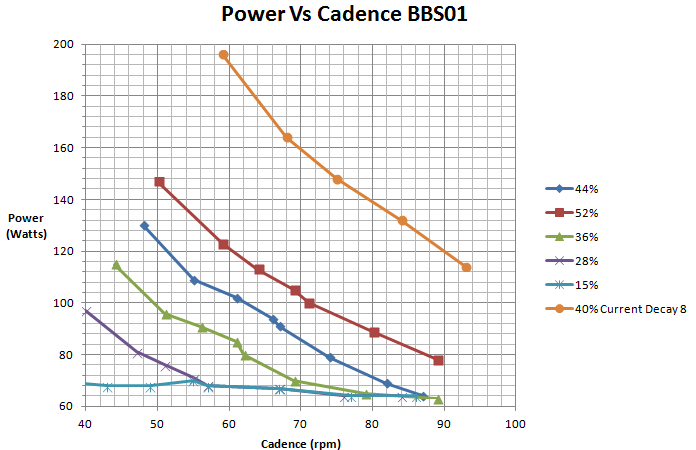Hello!
Setup
I've got BBS02 48V. The settings are attached, and also available at:

 pastebin.com
pastebin.com
The key display settings are:
PAS levels: 9
Max speed: 55 km/h
I have a 9-speed cassette, 11-34.
"Problem" description
Let's say I ride at PAS level 3 and gear 6, I like my cadence, but don't mind increasing the speed a bit.
When I reach a certain speed, the motor stops helping. I can engage it by either increasing the PAS level or shifting to a higher gear. Either way my cadence gets less comfortable: either easier, or harder than I'd like.
I choose to shift to gear 7. But shortly I get the same issue albeit at a higher speed. The motor stops helping again. And I have the same dilemma: increase PAS or shift to the next gear.
Questions
1/ Why does shifting to a higher gear engages the motor? I only have the speed sensor. The gear sensor is currently not used, but the behavior is the same when it's active.
2/ Are there settings I can tweak to make my pedaling smoother? IDK how to formulate this clearly, but I'd like to have a more natural feeling of controlling speed with my cadence. I realize this may not possible without the torque sensor. Yet I'm willing to try different controller settings.
I've searched the forums, but couldn't find the answer to my questions. Please share the link if they were asked before
Thanks!
Setup
I've got BBS02 48V. The settings are attached, and also available at:

Bafang config - Pastebin.com
Pastebin.com is the number one paste tool since 2002. Pastebin is a website where you can store text online for a set period of time.
The key display settings are:
PAS levels: 9
Max speed: 55 km/h
I have a 9-speed cassette, 11-34.
"Problem" description
Let's say I ride at PAS level 3 and gear 6, I like my cadence, but don't mind increasing the speed a bit.
When I reach a certain speed, the motor stops helping. I can engage it by either increasing the PAS level or shifting to a higher gear. Either way my cadence gets less comfortable: either easier, or harder than I'd like.
I choose to shift to gear 7. But shortly I get the same issue albeit at a higher speed. The motor stops helping again. And I have the same dilemma: increase PAS or shift to the next gear.
Questions
1/ Why does shifting to a higher gear engages the motor? I only have the speed sensor. The gear sensor is currently not used, but the behavior is the same when it's active.
2/ Are there settings I can tweak to make my pedaling smoother? IDK how to formulate this clearly, but I'd like to have a more natural feeling of controlling speed with my cadence. I realize this may not possible without the torque sensor. Yet I'm willing to try different controller settings.
I've searched the forums, but couldn't find the answer to my questions. Please share the link if they were asked before
Thanks!





